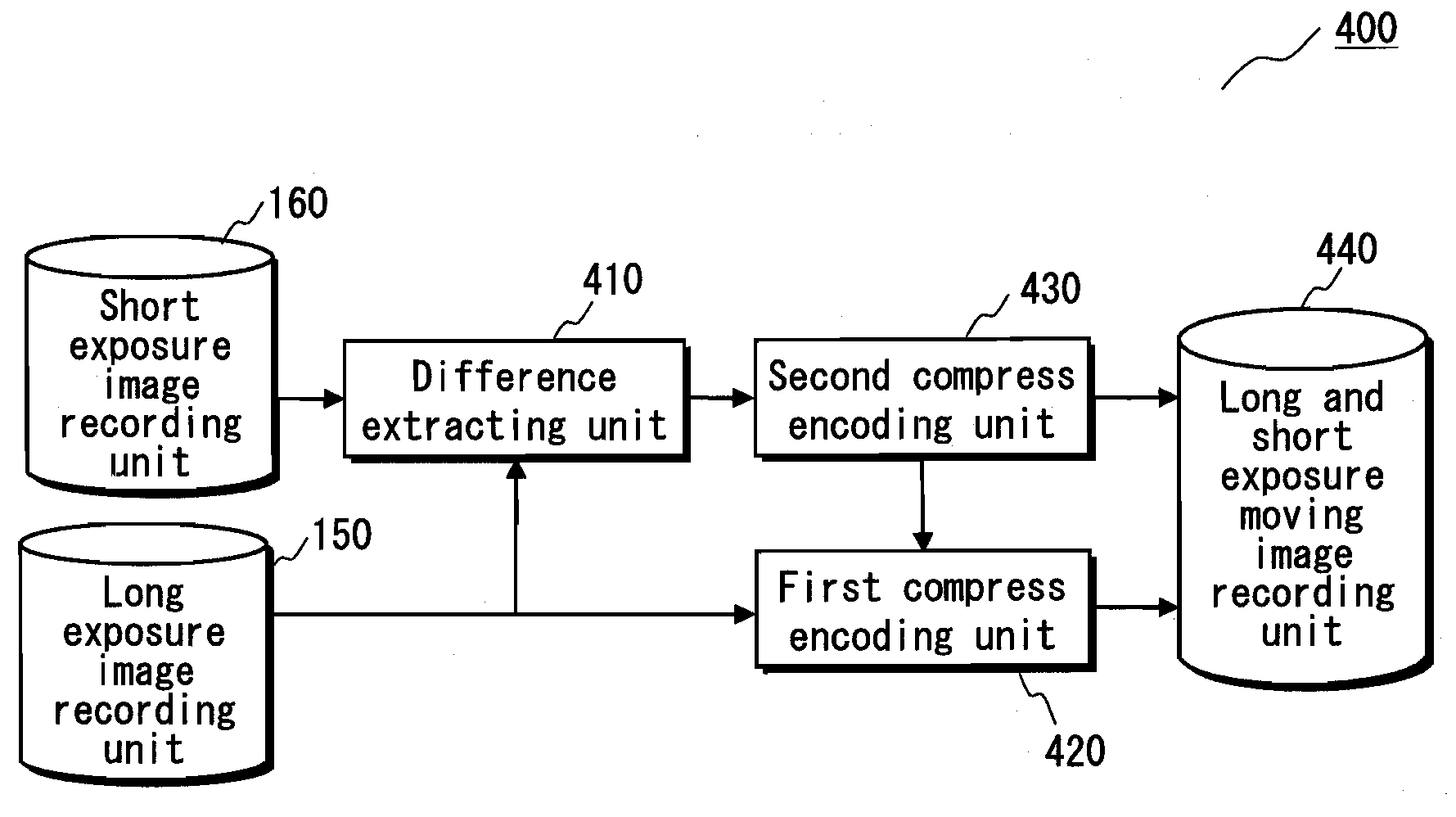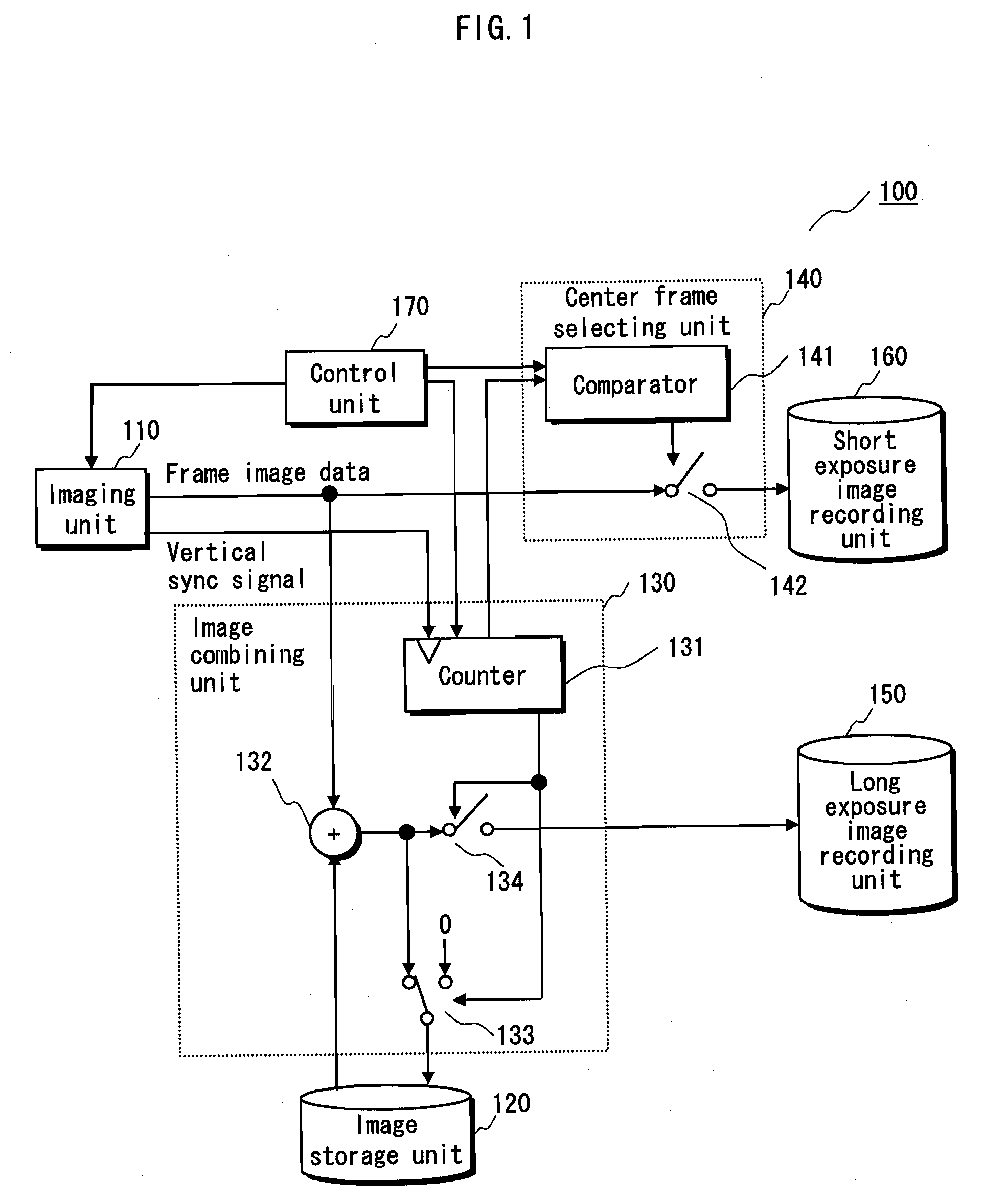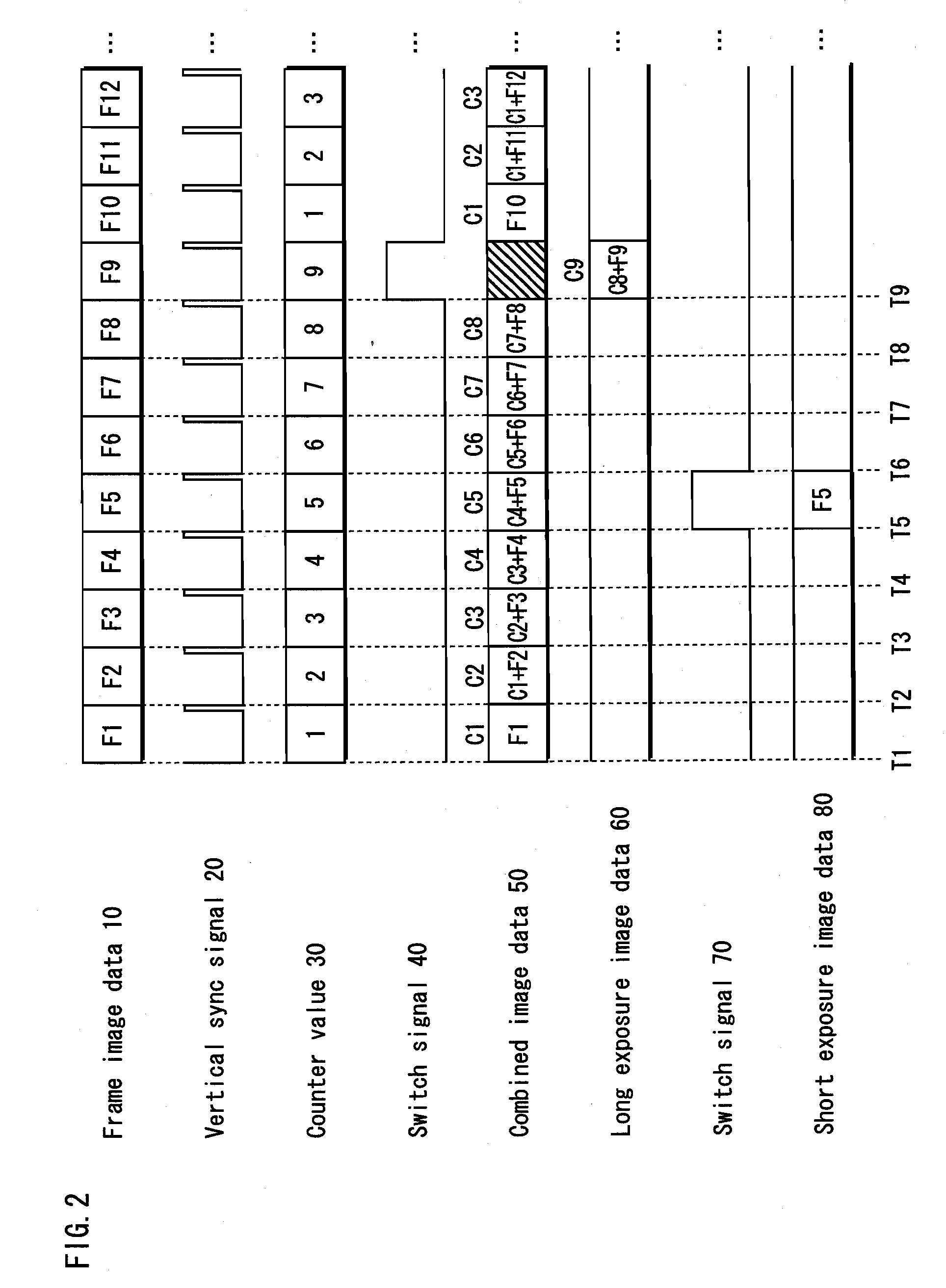Image processing device
- Summary
- Abstract
- Description
- Claims
- Application Information
AI Technical Summary
Benefits of technology
Problems solved by technology
Method used
Image
Examples
embodiment 1
[0097]The image processing device of Embodiment 1 is an improvement of a conventional image processing device (imaging device) having an image taking function. The image processing device of Embodiment 1 obtains frames of image data in sequence as it takes images of an object, and by using the obtained image data, it generates two types of moving image data that are composed of frames of image data with two different exposure times.
[0098]The image processing device of Embodiment 1 obtains frames of image data in sequence as it takes images of an object with a predetermined exposure time. The image processing device of Embodiment 1 then performs the following process for each predetermined number of frames of image data (hereinafter, the predetermined number is referred to as “combination number”) in sequence in order of image taking. The combination number may be any number, but is “9” for example.
[0099]More specifically, the image processing device of Embodiment 1 generates image d...
embodiment 2
[0176]The image processing device of Embodiment 2 is an improvement of a conventional image processing device (moving image encoding device) that supports the MPEG-4 AVC (Moving Picture Expert Group-4 Advanced Video Coding) standard, and generates a plurality of encoded data sequences in the format of MPEG-4 AVC by compress encoding a plurality of sets of image data.
[0177]More specifically, the image processing device of Embodiment 2 compress encodes the long exposure image data and the short exposure image data generated by the image processing device 100 of Embodiment 1 as follows: the image processing device of Embodiment 2 detects motion vectors of each piece of short exposure image data, and compress encodes each piece of short exposure image data and corresponding pieces of long exposure image data using the detected motion vectors.
[0178]That is to say, the conventional image processing device detects motion vectors from the long exposure image data and the short exposure imag...
embodiment 3
[0211]The image processing device of Embodiment 3 is an improvement of a conventional image processing device (playback device) that plays back encoded data sequences in the MPEG-4 AVC format, and can perform playback at different playback speeds by switching between different types of encoded data sequences to be read out for the playback, namely by switching between encoded long exposure image data sequences and encoded short exposure image data sequences, which are both in the MPEG-4 AVC format and are generated by the image processing device 200 in Embodiment 2.
[0212]More specifically, to playback at a normal rate, the image processing device of Embodiment 3 reads out encoded long exposure image data in sequence in order of playback from the encoded data sequences in the MPEG-4 AVC format so that the decoded long exposure image data are displayed in sequence. This enables the moving image to be displayed smoothly.
[0213]Further, upon receiving, from the user, a playback speed swi...
PUM
 Login to View More
Login to View More Abstract
Description
Claims
Application Information
 Login to View More
Login to View More - R&D
- Intellectual Property
- Life Sciences
- Materials
- Tech Scout
- Unparalleled Data Quality
- Higher Quality Content
- 60% Fewer Hallucinations
Browse by: Latest US Patents, China's latest patents, Technical Efficacy Thesaurus, Application Domain, Technology Topic, Popular Technical Reports.
© 2025 PatSnap. All rights reserved.Legal|Privacy policy|Modern Slavery Act Transparency Statement|Sitemap|About US| Contact US: help@patsnap.com



